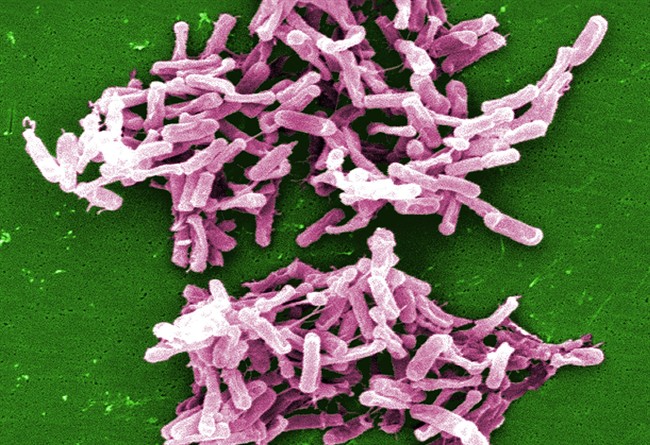Canadian hospitals reduced their C. difficile rates by 36 per cent in recent years, according to a new study published in the Canadian Medical Association Journal on Monday.

“It’s a good news story,” said study co-author Dr. Kevin Katz, medical director of infection prevention and control at North York General Hospital.
“Hospitals have been focused on C. difficile as a patient safety issue for a long time,” he said and he thinks that their efforts are starting to help. There were 2,489 cases reported in the 53 Canadian hospitals that participated in the study in 2015. There were 16 deaths.
The infection rate peaked at 6.7 per 10,000 patient days in 2011 and dropped to 4.3 per 10,000 patient days in 2015 – a fall of 35.8 per cent.
C. difficile is a type of bacteria that’s naturally found in many individuals, said Katz, and doesn’t necessarily cause them harm. What causes problems is when these people get sick and are put on antibiotics for whatever reason.
“The antibiotics actually don’t just work at the site the antibiotic is intended for. If you have a skin infection, it doesn’t just work in the skin. It also kills bacteria in the bowel, good bacteria in the bowel,” he said.

Get weekly health news
“But it doesn’t kill the C. difficile so then you change the balance of bacteria in the bowel. The C. difficile has more space to grow, increases in numbers, starts to produce a toxin and then the toxin causes inflammation and diarrhea.”
Doctors treat C. difficile with more targeted antibiotics, but some bacteria have developed a resistance, making the illness difficult to treat. In some patients, particularly those who are elderly or have compromised immune systems, complications from C. difficile can land them in intensive care or even lead to death.
Hospitals have been trying to control infections by carefully cleaning their facilities, reducing the inappropriate use of antibiotics, identifying cases of C. difficile early so patients can be isolated, and making an effort on hand hygiene, he said.
Dr. Christine Lee, an infectious disease physician and medical microbiologist at St. Joseph’s Hospital in Hamilton, was not surprised to see the national drop in the number of C. diff infections, an occurrence mirrored at her hospital and others in the region.
“I think it’s because of a concerted effort between the infection prevention at each hospital and more hypervigilance by the health-care providers,” said Lee, who was not involved in the study.
“When people work together in a concerted effort, it does make a positive difference.”
New strains
The researchers noticed that not only was the rate of C. difficile infection falling, but the particular bacterial strain involved was getting less dangerous.
WATCH: A dog named Angus is being recognized for his work in sniffing out C. difficile, which is the No. 1 cause of infectious diarrhea in hospitals.

While most cases are still of the NAP1 strain, other strains are becoming more common, said Katz.
“The NAP1 strain, in the lab, there’s been data showing that it can produce more spores, so it hangs out in the environment longer and that it can produce more toxin, which may mean that it can cause more disease,” he said. In their study, this particular strain led to more negative outcomes, like ICU admissions and deaths.
The other strains tend to affect younger people and have less severe outcomes, he said.
Katz doesn’t think that hospitals will ever completely eliminate C. difficile infections, simply because around six per cent of the population carries the bacteria. But, he thinks that they can still improve.
“I hope that the rate continues to fall.”
— With files from The Canadian Press


Comments